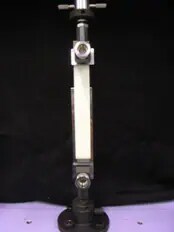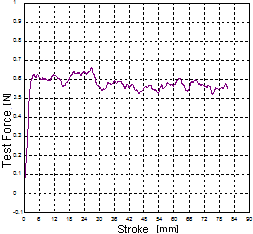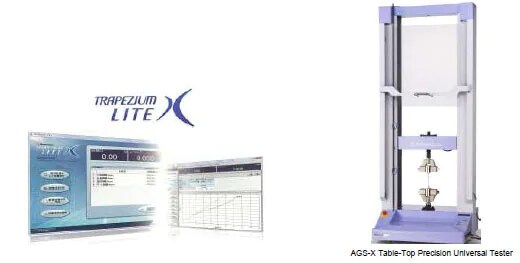AABC (Advanced Automotive Battery Conference) 2025
December 9-11
Caesars Palace
Las Vegas, NV
As the chemical industry has developed, adhesives using synthetic polymers as raw materials have been commercialized. These adhesives are often used in a variety of industrial fields, including electronics and electrical machinery. This article introduces an example of a 180° peeling test for adhesives used in adhesive tapes.
The sample was an ordinary adhesive tape cut to a width of 24 mm and a length of 300 mm; it was set on a SUS304 stainless steel plate. An end of the tape was gripped and the tape was folded back 180° so that the back sides of the tape contact each other. Then a 25 mm length of tape was peeled from the plate. The end of the plate where the tape was peeled off was fastened to the lower jig attached to the tester, and the adhesive tape was fastened to the upper jig.

Fig. 1: Peeling Test

Fig. 2: Relationship between the Test Force and Stroke
The test was implemented at a loading speed of 300 mm/min. After measurement started, measurement values for the initial length of 25 mm were discarded. Afterwards, the adhesive force measurement values for a length of 50 mm peeled off the plate were averaged. This average value was taken as the peeling adhesive force.
Table 1: Result
| Peeling Adhesive Force |
| 0.217 N/10 mm |
Tensile Testing System for Plastic Materials
| Title | Title |
|---|---|
| Tester | AGS-X |
| Load Cell | 50 N |
| Testing Jig | Pneumatic Flat Grips for 50 N (Flat Face) |
| Software | TRAPEZIUM LITE |
